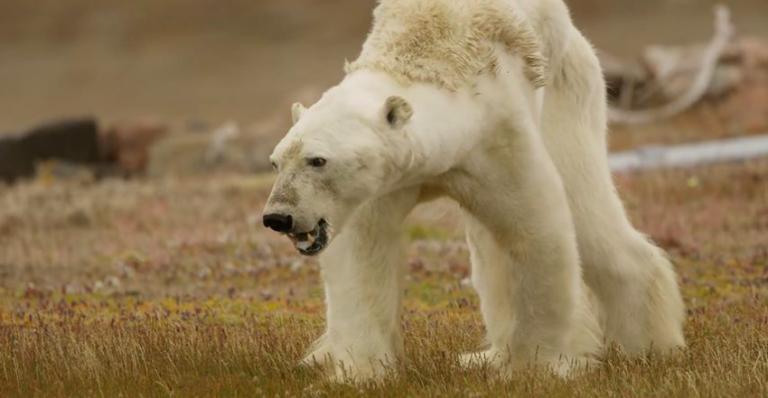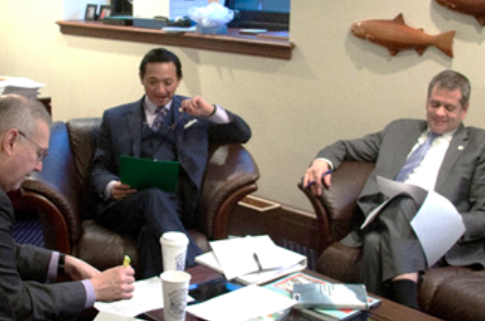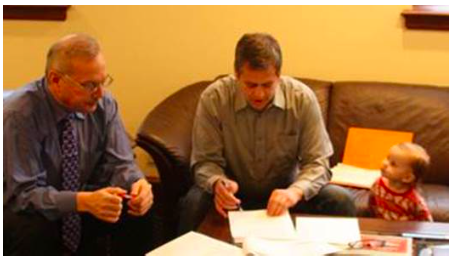Last week, the venerated National Geographic organization posted a video of what is evidently a starving polar bear, with yellowed fur and a bony frame, wandering around Somerset Island, Canada in search of food.
The social media world was aghast.
“This is horrible!” people intoned. “What have we done?” they asked Facebook friends, looking for answers from the mob. “This is living proof of our demise… So so cruel!”
All of a sudden, everyone was an expert.
There’s little doubt that bear was a goner, and his death scene was excrutiating. The piano and cello music that accompanies the footage made akin to the death of Mimi in La Boheme.
However, the timing for the release of that video was curious, and the fact that an environmental activist group (SeaLegacy) was responsible for it is not an accident.
SeaLegacy states its mission is “to create high-impact visual communications that propel people to take action to protect our oceans.” They went to the Arctic to document climate change impacts and they stumbled on a doozy.
Some of the organization’s work is positively stunning. And some, like this video, is downright misleading.
THE CLEVER TIMING
The footage was taken in July, but not released until December.
“This is what climate change looks like,” the caption reads, at about the 10-second mark. The captions continue, saying that shrinking sea ice is causing this starvation.
But just as the opening of the Arctic National Wildlife Refuge for oil and gas exploration was moving into congressional conference committee last week, National Geographic decided that now is the time to roll out the video?
It was a hail Mary pass for the vast environmental industry. They were even fact-checked by Snopes.com, and the organization declared the video “True.”
Inuit hunters fact-checked it and come up with a different viewpoint.
The Inuit in Canada are likely the world experts on polar bears, and they not only pushed back at SeaLegacy’s assertions.
“Climate change has very little to do with it,” said Eric Ootoovak, vice-chair of the Mittimatalik Hunters and Trappers Organization on Baffin Island. “You can really tell he’s sick. He’s not starving. If he was starving, he’d be able to move a bit more than that.”
Baffin Island hunters have been monitoring polar bear populations for generations — long before the bears became the poster-child animals for global warming.
“There’s too many bears in our area,” Ootoovak said, adding that they are becoming a menace to people. “My grandmother used to tell me stories from when they lived in sod houses and they would never see polar bears. When there was finally a bear, people all over spoke about it. Today, it’s impossible to camp without having a bear watch.”
[Read: The problem with polar bear propaganda]
But SeaLegacy doubled down on the hunters:
“Inuit people make a lot of money from polar bear trophy hunting,” SeaLegacy co-founder Cristina Mittermeier told CBC radio. “Of course it is in their best interest to say that polar bears are happy and healthy and that climate change is a joke, because otherwise their quota might be reduced.”
The July video was captured by SeaLegacy filmmakers on Somerset Island, near Baffin Island in Nunavut, where they were shooting a documentary about the effects of climate change.
Scientists with a contrary view have been largely ignored. The IUCN Polar Bear Specialist Group says the global population of polar bears is between 22,000 and 30,000.

One thing is certain: Polar bears are at the top of the food chain with no natural predators other than an occasional Inuit hunter. They are more likely to die of old age and age-related diseases than other species, such as whales, which are harvested or whose lifespans are even more difficult to document.
The population of polar bears appears to be increasing in some areas, while decreasing in others.
A 2016 scientific working group report on the Baffin Bay and Kane Basin polar bear populations was released in February, and confirmed what local Inuit have been saying: The populations are stable. The report received scant coverage from the media.
[Read the report on Baffin Bay and Kane Basin polar bear population trends here.]
Yet with cameras and polyester puff jackets, environmental propagandists will continue to descend on the Arctic. In the name of storytelling, they will document a lot more of these deaths — natural or otherwise — in their effort to warn us all of an apocalyptic future where zombie polar bears roam the tundra and chew on the rubber seats of snow machines for sustenance, while cello music plays in the background.
















